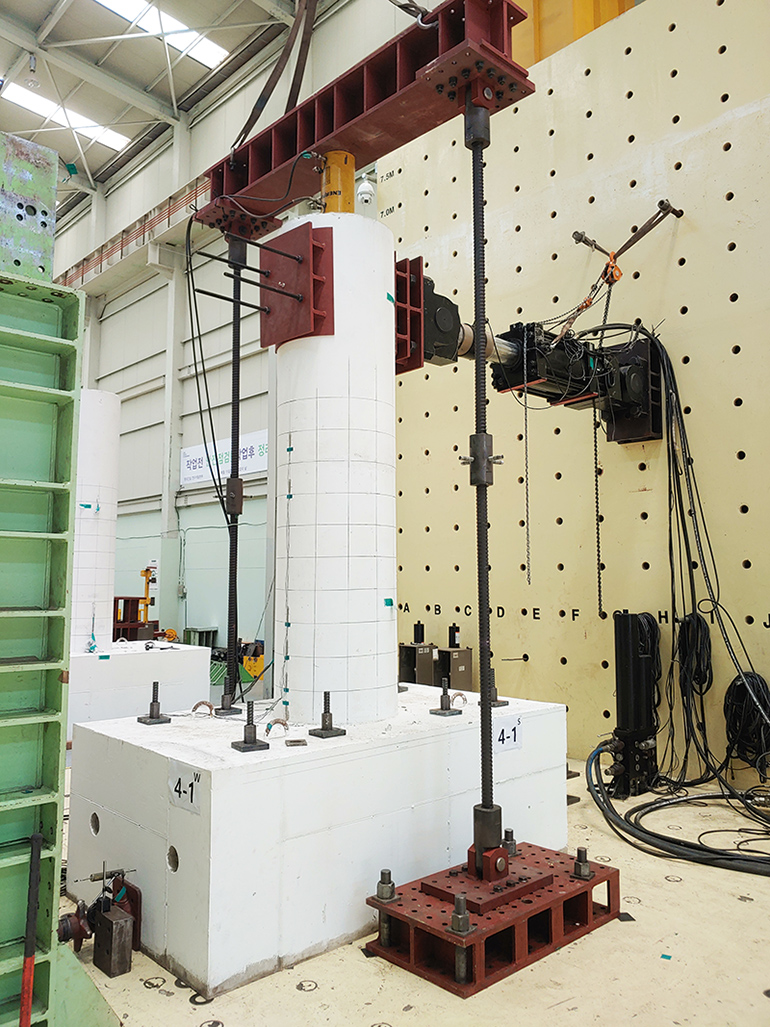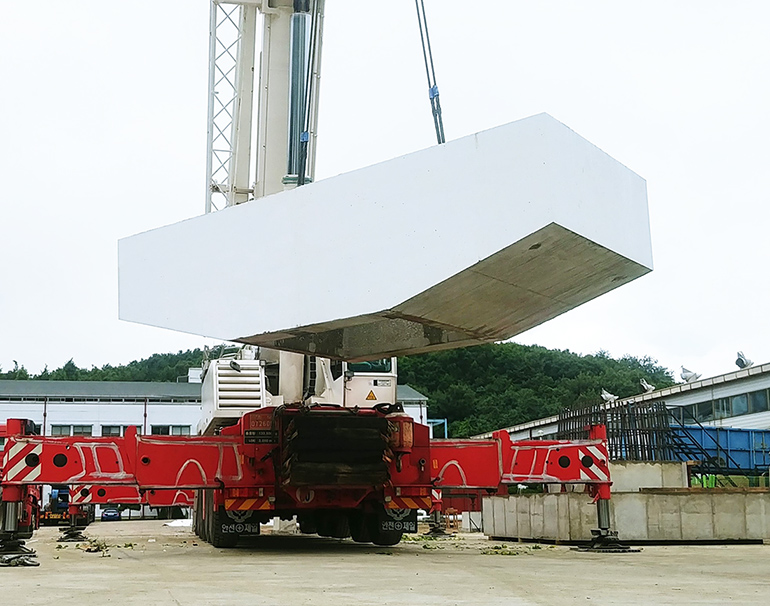
Latest News
- Hyundai E&C Signs PPA for Solar Renewables with Glennmont D&D Solar Holdings
- Hyundai E&C to Embark on UK SMR Project forging Korea-US-UK Technology Alliance
- Hyundai E&C Consolidates Leading Position in Concrete Safety and Quality Technology
- Hyundai E&C Selected as Preferred Bidder for Large Nuclear Power Plant in Bulgaria
- Hyundai E&C Attains “Leadership A” in CDP's Climate Change Assessment
Hyundai E&C develops Precast Concrete Bridge Piers, accelerating smart construction.
Hyundai E&C has accelerated Off-Site Construction(OSC) at its construction sites, by developing and filing a patent for a prefabricated bridge pier system applying the PC(Precast Concrete) method to the entire bridge substructure.


The OSC technology involves prefabricating construction materials and structures and assembling them at a construction site and refers to a transition from on-site to off-site construction.
The PC method is a construction method in which concrete structures such as columns, beams, and slabs are fabricated at a factory as part of off-site construction, and then moved to the construction site for assembly.
As structures are assembled at the site, the construction period can be shortened in comparison to the conventional method of assembling rebars and placing concrete, and efficient on-site operations of manpower and equipment become possible.
In the existing bridge construction, the PC method applied to only the superstructure of the bridge, and the substructure was built by assembling rebars and placing concrete at the site.
As a result, on-site operations of manpower, equipment, and materials were less efficient, while safety concerns and traffic congestion , and complaints in bridge construction in urban areas were frequent.
To address this issue, Hyundai E&C developed the precast concrete bridge pier system that allows for the prefabrication of the entire bridge substructure with the PC method, including the *Pier-Cap and column consisting of the bridge’s substructure, and completed the structural performance test on the real model.
*Pier-Cap : Structure supporting the superstructure installed on a column
The quality management and durability have been enhanced by prefabricating pier caps and pillars that make up the substructure of the bridge at the factor and not a construction site, but also the foundation plate and construction itself can be worked on at the same time, allowing for a shorter construction period and more efficient budgeting compared to the conventional approach.
It is expected that traffic congestion and environmental complaints in urban bridge construction will decrease, as construction can be completed in a short period time at night, and safety accidents will be effectively reduced, as the number of processes involving on-the-bridge operations will be reduced.
Hyundai E&C has continued to expand the development and application of smart construction and already used the PC method for Wave Overtopping Protection, which helps to prevent waves from crossing over from the top of the breakwater. In the case of breakwater construction, concrete placement is carried out offshore, far from onshore with high wave height, but due to the nature of sea work, the number of workable days was limited, and in the event of assembling or dismantling mold, construction work was often suspended due to inflow of seawater. As a countermeasure, Hyundai E&C manufactured the outer wall of the upper structure of the breakwater as a PC block and mounted it, and applied the partial PC method of utilizing this as a permanent mold, shortening the construction period by about 30%.
Meanwhile, Hyundai E&C is taking the lead in OSC at construction sites by applying the PC method to construction works in addition to civil engineering, including the construction of bridges and breakwaters.
The PC Double Wall Method, which was designated as a new construction technology by Korea’s Ministry of Land, Infrastructure, and Transport last year(no.920), is being developed and applied to underground parking lots of apartment complexes, and research is also being accelerated to apply the PC method to ground floors.
An official from Hyundai E&C said, "Smart construction technologies such as PC method and OSC have grown in importance for a better working environment for workers and construction quality at sites,” adding that, “Going forward, we will actively develop and introduce various smart industry 4.0 technologies to improve the working environment and strengthen the competitiveness of our construction sites, while leading the advancement of the construction sector as a whole.”

